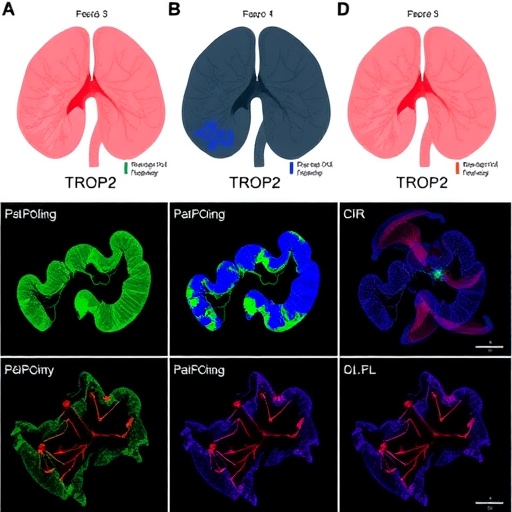In recent years, the medical community has increasingly focused on the complexities surrounding retinoblastoma, a malignant neoplasm that primarily impacts the retina in young children. Despite its relatively low incidence, this pediatric tumor requires nuanced understanding, particularly regarding its potential for dissemination beyond the ocular environment. One alarming aspect that pediatric radiologists must keep in mind is cerebrospinal fluid (CSF) metastasis. The evolving discourse surrounding this phenomenon has garnered attention, emphasizing the need for enhanced vigilance in diagnosing and managing retinoblastoma in clinical settings.
Cerebrospinal fluid metastasis in retinoblastoma represents a significant shift in how we perceive this cancer’s progression. Traditionally, the focus has been on identifying primary tumors within the eye and potential local spread. However, recent findings indicate that retinoblastoma can extend its reach through the CSF. This form of metastasis poses unique challenges for pediatric radiologists, who must be equipped with the latest knowledge and diagnostic tools to identify indicators of such spread effectively. It is crucial to understand that the presence of CSF metastases is often a harbinger of advanced disease, resulting in grave implications for treatment options and overall prognosis.
The biological mechanisms underlying CSF metastasis in retinoblastoma are an essential area of study. Researchers have observed that tumor cells can migrate from the retina into the CSF pathways, utilizing the neuro-axial routes to establish secondary tumors within the central nervous system. The ability of these neoplastic cells to traverse neural barriers highlights the aggressive and insidious nature of retinoblastoma. Moreover, this migration raises questions about the potential for treatment resistance, as disseminated cells may not respond uniformly to conventional therapies administered for localized disease.
Clinical presentation of CSF metastasis can vary widely. Pediatric patients may exhibit a spectrum of neurological symptoms, ranging from subtle behavioral changes to severe complications such as seizures or altered consciousness. Understanding this clinical variability is paramount for pediatric specialists, as it calls for a high degree of suspicion when assessing young patients with a history of retinoblastoma. The recognition of early signs of CSF involvement can significantly impact the course of treatment, potentially allowing for earlier intervention and improved outcomes.
Imagery plays a crucial role in the diagnosis of cerebrospinal fluid metastasis. Advanced imaging techniques, such as magnetic resonance imaging (MRI), have revolutionized how clinicians visualize and evaluate the central nervous system in patients with retinoblastoma. MRI scans can elucidate the presence of abnormal lesions indicative of metastasis. Furthermore, these imaging modalities can aid in differentiating between reactive changes and true neoplastic lesions, a distinction that is vital for appropriate management decisions. Radiologists must stay updated on the latest imaging protocols and criteria to optimize diagnostic accuracy.
Given the heightened risk of CSF metastasis in retinoblastoma, developing an interdisciplinary approach to management is essential. Collaboration between pediatric oncologists, neurologists, and radiologists fosters a comprehensive understanding of patient care. Such teamwork can facilitate timely referrals, ensuring that patients with suspected CSF involvement receive prompt evaluation and treatment. Emphasizing the importance of this multifaceted collaboration is crucial as we move toward more integrative models of care in pediatrics.
Moreover, the implications of CSF metastasis extend beyond immediate patient management; they reverberate through the broader realm of pediatric cancer research. The increasing recognition of CSF spread in retinoblastoma underscores the necessity for ongoing research into the biological mechanisms governing metastasis. Investigating genetic mutations, tumor microenvironments, and immune responses could yield insights into preventative strategies or novel therapies aimed at mitigating CSF involvement.
In light of these complexities, it becomes clear that continued education and awareness for pediatric radiologists are vital. Regular training sessions, workshops, and updates on emerging literature should be core components of professional development in this specialty. By cultivating a culture of learning, we can enhance the ability of healthcare providers to recognize and address the unique challenges posed by retinoblastoma and related conditions.
In conclusion, cerebrospinal fluid metastasis in retinoblastoma exemplifies the dynamic and often unpredictable nature of pediatric malignancies. As our understanding of this condition grows, so too must our commitment to improving diagnostic acumen, enhancing treatment modalities, and fostering collaborative care strategies. The stakes are high, as early detection and intervention can significantly influence a child’s prognosis, making it imperative for the pediatric medical community to remain vigilant and proactive in their approach to retinoblastoma.
The conversation around cerebrospinal fluid metastasis is not merely an academic exercise; it holds profound implications for clinical practice. As we share knowledge and experiences within the medical community, we can pave the way for innovative solutions that ultimately benefit the youngest and most vulnerable patients afflicted by retinoblastoma. The journey to comprehensively understand and combat this disease continues, and with it comes hope for improved outcomes and quality of life for pediatric patients facing the daunting challenges posed by retinoblastoma.
With ongoing research and heightened awareness, we are beginning to grasp the intricate dance between retinoblastoma and its potential for metastasis. The way forward will undoubtedly require diligent focus on both treatment effectiveness and early detection strategies. As practitioners and researchers rally together, we stand at the cusp of potentially transformative advancements in pediatric oncology.
In summary, the reality of cerebrospinal fluid metastasis in retinoblastoma necessitates a paradigm shift in how we conceptualize and approach childhood cancers. Our engagement with this issue today will shape how we understand and respond to retinoblastoma in the future. The urgency of this work cannot be overstated, and the obligation lies with all of us in the medical field to prioritize the health and well-being of our pediatric patients.
As this discussion evolves, we must remain committed to elevating the conversation around retinoblastoma and its treatment. Through collaborative research efforts, effective communication, and relentless commitment, we can position ourselves to revolutionize the care of children battling this formidable malignancy, ultimately leading to brighter futures for young patients and their families.
Subject of Research: Cerebrospinal fluid metastasis in retinoblastoma
Article Title: Cerebrospinal fluid metastasis in retinoblastoma – a must know for pediatric radiologists: reply to Ching et al.
Article References:
Bhatia, A., Prabhakar, A., Sodhi, K. et al. Cerebrospinal fluid metastasis in retinoblastoma – a must know for pediatric radiologists: reply to Ching et al.
Pediatr Radiol (2025). https://doi.org/10.1007/s00247-025-06415-y
Image Credits: AI Generated
DOI: https://doi.org/10.1007/s00247-025-06415-y
Keywords: Retinoblastoma, cerebrospinal fluid metastasis, pediatric radiology, early detection, treatment strategies, imaging techniques, multidisciplinary care, cancer research.
Tags: advanced retinoblastoma prognosisbiological mechanisms of metastasiscerebrospinal fluid cancer spreaddiagnostic tools for retinoblastomaimplications of CSF spread in cancermalignant neoplasm in childrenmanaging retinoblastoma in clinical settingsocular tumor disseminationpediatric cancer treatment challengespediatric radiology advancementsretinoblastoma CSF metastasisunderstanding pediatric oncology





